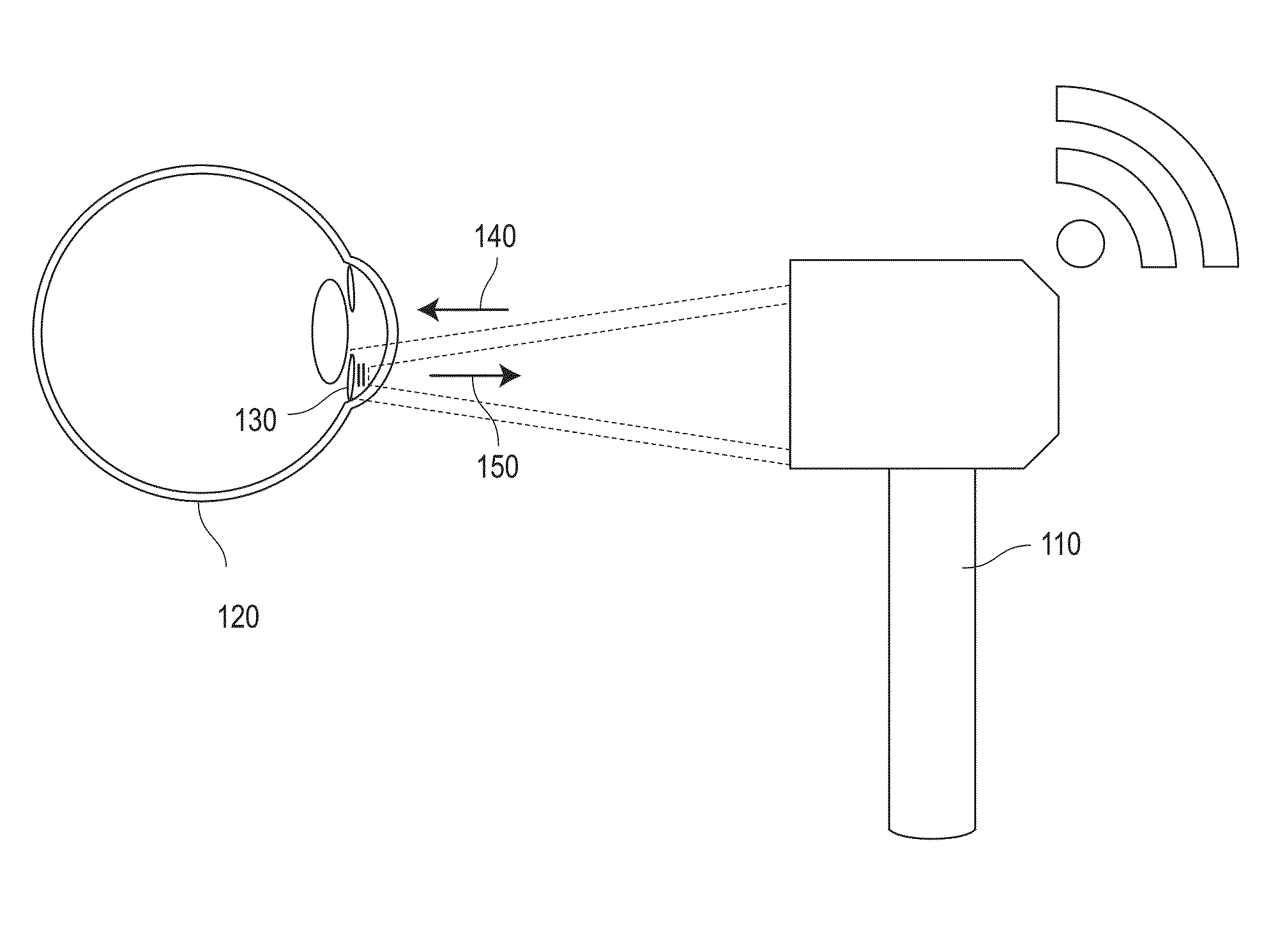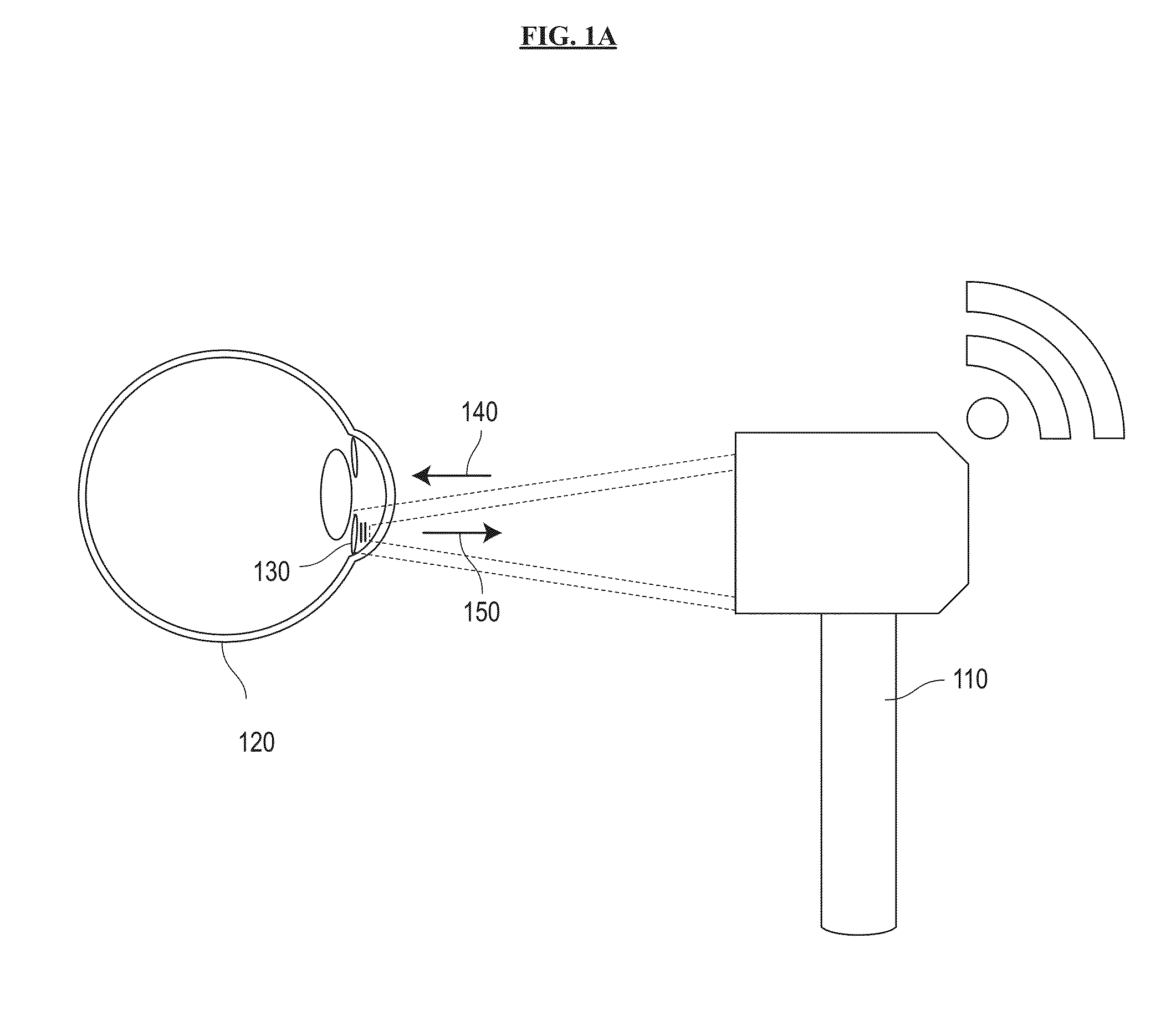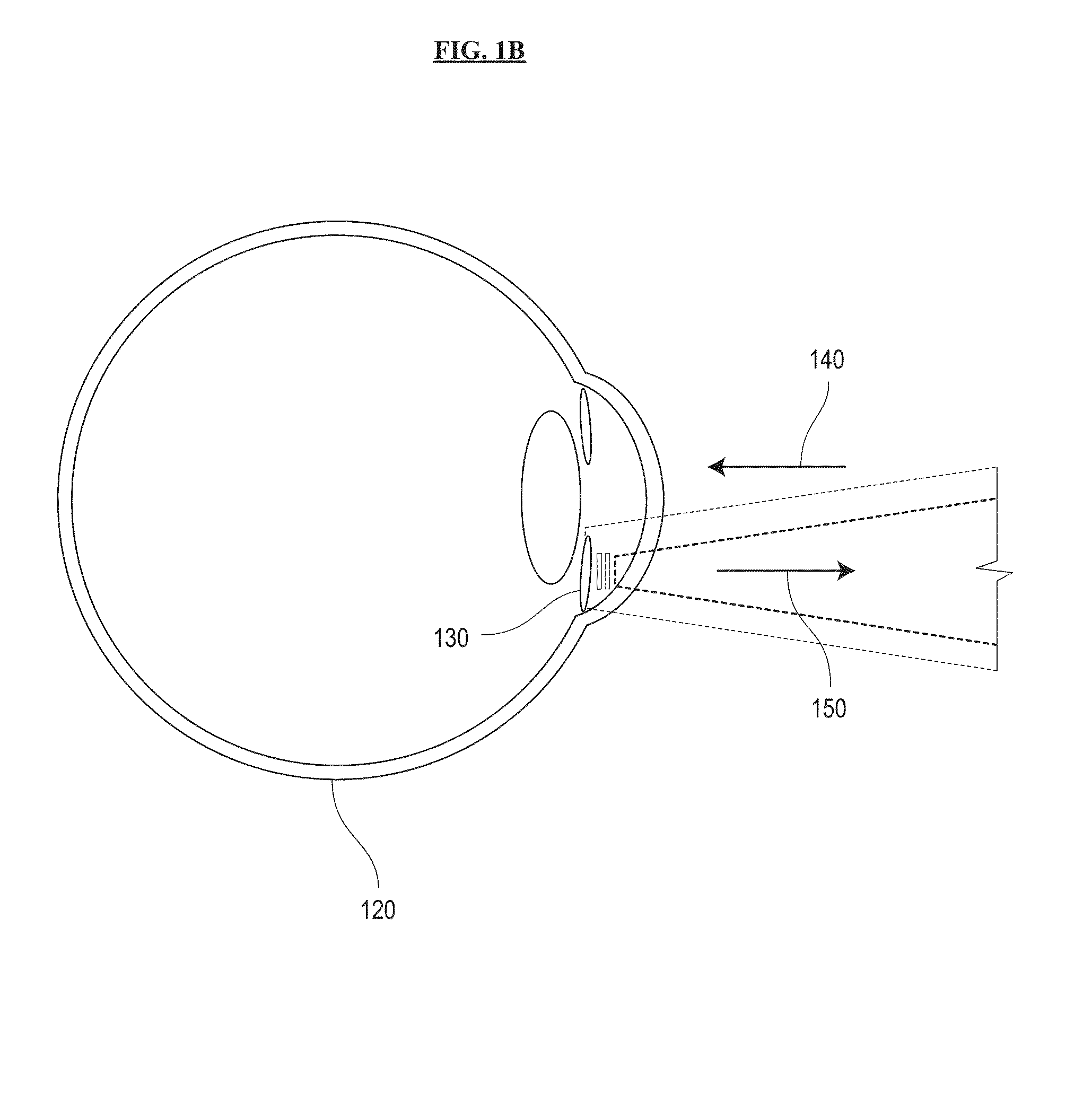Systems and methods for sensing intraocular pressure
a technology of intraocular pressure and sensing system, applied in the field of optical sensors, can solve the problems of reducing the accuracy and repeatability of animal iop measurements, affecting the comprehensive understanding of the iop profile of individual patients, and requiring anesthesia and extreme care, so as to improve the sensitivity and strength of the readout signal, reduce the size of the sensor, and simplify the effect of sensor design
- Summary
- Abstract
- Description
- Claims
- Application Information
AI Technical Summary
Benefits of technology
Problems solved by technology
Method used
Image
Examples
Embodiment Construction
[0040]Systems and methods for sensing intraocular pressure (“IOP”) are described. In the following description, for purposes of explanation, numerous specific details are set forth in order to provide a thorough understanding of the exemplary embodiments. It is apparent to one skilled in the art, however, that the present invention can be practiced without these specific details or with an equivalent arrangement.
[0041]Referring now to the drawings, wherein like reference numerals designate identical or corresponding parts throughout the several views, FIGS. 1A and 1B are schematic diagrams of a system for sensing intraocular pressure in accordance with an embodiment of the invention. A battery-free IOP-sensing implant 130 with remote optical readout is inserted into the ocular anterior chamber of an eye 120, between the cornea and the iris. The sensor implant 130 is excited by an excitation beam 140 from an external light source built into a portable, handheld reader unit 110. The r...
PUM
 Login to View More
Login to View More Abstract
Description
Claims
Application Information
 Login to View More
Login to View More - R&D
- Intellectual Property
- Life Sciences
- Materials
- Tech Scout
- Unparalleled Data Quality
- Higher Quality Content
- 60% Fewer Hallucinations
Browse by: Latest US Patents, China's latest patents, Technical Efficacy Thesaurus, Application Domain, Technology Topic, Popular Technical Reports.
© 2025 PatSnap. All rights reserved.Legal|Privacy policy|Modern Slavery Act Transparency Statement|Sitemap|About US| Contact US: help@patsnap.com



